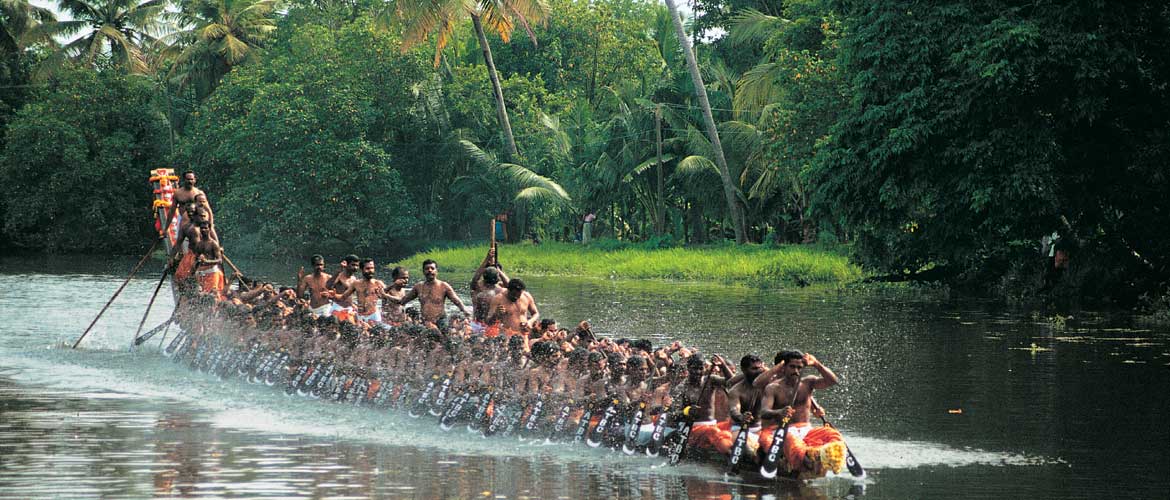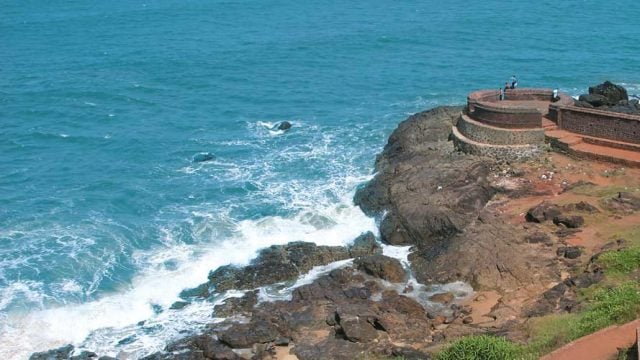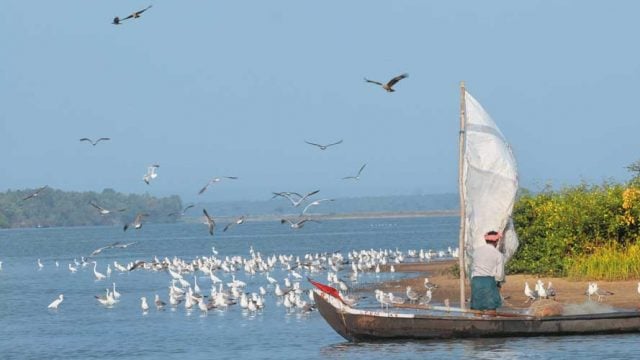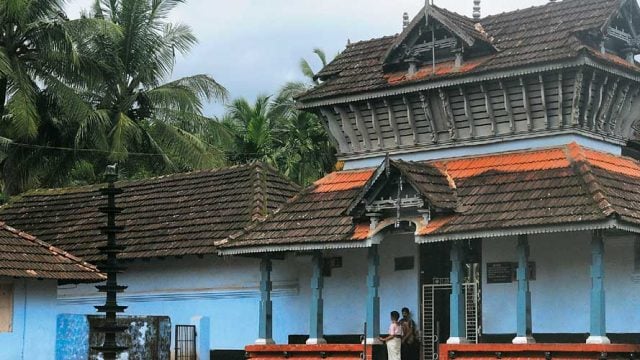According to legend, Kerala was created by Parashurama, the sixth of the ten incarnations of

GEOGRAPHY
Abu Abraham once famously said, “there is Kerala and there is India”. He wasn’t wrong. Straddled by the Western Ghats on one side and the Arabian Sea on the other, Kerala is as different from the rest of India as pepper is from chilli. Spread over 38,863sq km, it shares its borders with Tamil Nadu to the east and south and Karnataka to the north and northeast. From the cool, mountainous terrain in the eastern highlands and the rolling green hills in the central midlands to the vast coastal plains in the western lowlands – the state boasts of a diversity unlike any other. Add to that the Kerala Backwaters and you have a paradise, which Keralites proudly refer to as “God’s own country”. This south-Indian state enjoys a wet and maritime tropical climate. The Western Ghats play an important role in making it the fertile land it is – monsoon clouds encounter these ancient peaks as soon as they hit land, thus forcing them to shed their moisture, which gives rise to many small monsoon-fed rivers. The state holds around eight per cent of India’s waterways including prominent rivers such as the Periyar, Pamba and Bharathapuzha. The Western Ghats are also known for their biodiversity and are thus a protected zone, which includes the Nilgiri Biosphere Reserve. The reserve is home to numerous species of mammals, birds, reptiles and amphibians, and was declared a World Heritage Site by UNESCO in 2012.
HISTORY
The state is well known for spices such as pepper and cinnamon, commodities which first attracted traders to Kerala as early as 3000 BCE during the reign of the Chera dynasty. Trade with the rich port of Muziris (Kodungalloor), brought with it first Egyptians, then Romans, later Arabs newly converted to Islam and the Chinese, who introduced the art of fermenting batter, plantation farming and some rather complicated fishing nets, which are still used in Kerala. These traders also brought with them their religions and thus Kerala saw the first Jews, Muslims and Christians on the shores of India. St. Thomas the Apostle also landed in Kerala and is believed to have established the first church on Indian soil in Palayur in 52 CE.
The Arabs dominated the spice trade until the 15th century when European traders began exploring unknown lands. The Portuguese began dominating the spice trade, in particular pepper, and this culminated in the arrival of Vasco da Gama in Kappad, Kozhikode in 1498. The Zamorin ruler of Kozhikode was unimpressed with both his ships and his gifts. The Portuguese had to settle for establishing themselves at Kochi, but they soon turned their gaze north once again. War followed, and by the mid-16th century, the Zamorin was forced to grant the Portuguese the right to trade.

Close on their heels came the Dutch, who arrived in 1604 at Kozhikode, and the French, who established a trading post at Mahe. Kerala became the hub of trade in opium, sugar, coffee, silk, explosives and weapons. The Portuguese introduced crops from the New World, such as cashew, papaya and tapioca. The Dutch brought indigo and coffee. It wouldn’t be long before such a wealthy realm caught the eye of new invaders, such as the British East India Company, which annexed Malabar. In 1782 Tipu Sultan drove the British out, though he would hold Malabar for just 10 years. In 1789, Tipu attempted to seize Travancore, whose rajas turned to the British, who repelled Tipu. Thus Travancore became their protectorate. By the end of the 18th century, the whole of Kerala was under British rule. During the struggle for independence, there were several revolts in the region, the most notable being the Malabar Rebellion of 1921 when Mappila Muslims rose up against Hindu zamindars and the Raj. The state as we know it today came into existence in 1956 following the States Reorganisation Act, when various Malayalam-speaking regions were brought under one umbrella.
DON’T MISS IN….
..Travancore
Houseboat-makers’ village ■ Midnight Kathakali in Thiruvalla ■ Blessings of Sree Ayyappa ■ Elephant Camp at Konni ■ Vaasthu vidya at Aranmula ■ Riverbed convention at Maramon ■ India’s first ecotourism destination ■ Birthplace of Kathakali ■ Monsoon at Kovalam ■ Two of St Thomas’ seven-and-a-half churches ■ Cashews and coir
..Kuttanad
Backwater cruise ■ Kallu, kappa and karimeen at Karimpumkala ■ Tombs of Kottayam’s saints ■ Muslim shrine on Sabarimala pilgrimage ■ Remnants of the Pandya kingdom ■ Paddy field walks ■ Backwater islands ■ Thakazhi’s home ■ Paal payasam at Ambalapuzha ■ Snakeboat-makers’ village ■ Stay in a spice plantation
.. Kochi
The gateway of Judaism, Christianity and Islam in India ■ Birthplace of Adi Sankaracharya ■ Elephants at Punathur Kotta ■ Birds and butter flies by the Periyar ■ ‘You buy, I cook’ seafood in Fort Kochi ■ Antiques from Mattan cherry ■ First grave of Vasco da Gama ■ A walk in St Thomas’ footsteps ■ A day with the masters at Kalamandalam ■ Krishnattom at Guru vayur ■ Bell-metal ware ■ Bathing in waterfalls
..Malabar
Theyyams in the Kannur kavus ■ A taste of kallumakaya and Mappila fish pathiri ■ Halwa from Sweet Meat Street ■ Cakes from Mambally’s ■ Pottery from Nilambur ■ Water sports on the Bharatapuzha ■ The Valiyaparamba and Valapattanam backwaters ■ Kasargod saris ■ Urus of Beypore ■ Ayurveda at Kottakkal ■ The only Garuda temple in India
The Western Ghats
Treks through the Sahya Hills ■ Wildlife viewing from a boat ■ Tea-tasting in India’s only Tea Museum ■ Spice shopping at Kumily ■ A night in the forest at Gavi ■ The view from Pullumedu ■ Tiger-spotting in forests ■ Stay in a machaan or treehouse ■ A cave restaurant near Tipu’s former battery ■ Camping on an uninhabited riverine island
OT Getaway Guides





